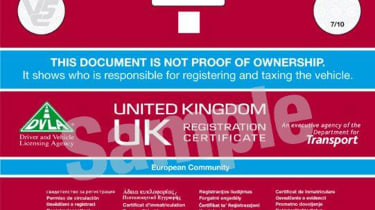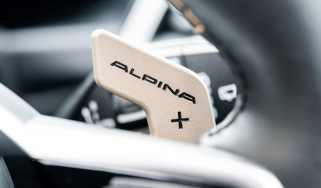V5C log book rules: what to do when you buy or sell a car
The V5C log book is one of the last paper bastions in an increasingly digitised motoring world: here’s what you need to know

Digitisation has already pushed the tax disc off our windscreens and the paper part of our driving licence out of existence, but the V5C document, also known as the plain old ‘V5’ or your car ‘logbook’, still exists in physical form - don't let this deceive you, though, as it hasn't avoided the jaws of the digital age entirely.
If you haven't personally run through the process in recent years, you might not be aware of the DVLA's latest processes when it comes to notifying of a sale. Though the paper logbook we all know remains virtually unchanged, there's now a service that allows a seller to notify the DVLA of a vehicle sale online, avoiding the drawn-out process of having to fill in the logbook, post it off and waiting for a response.
> Buying a Cat C or D car? Read our guide here
Doing away with much of the V5 logbook paperwork negates the need for costly administration. The online platform was primarily designed to save taxpayers money but it also saves sellers time and we’re fully in favour of that. One word of warning is that the simplicity of the new V5C system means it’s quite easy to forget to take the necessary action when you sell a car privately. And nothing has changed in one respect - failure to notify the DVLA of a car’s change of ownership will still land you with a hefty fine.
What to do with the V5 when selling a car
You still need the paper logbook when selling a car. Any potential suitors will want to check it over before making a decision on whether to buy. Negotiations over, a small subsection called the V5C/2 must be filled out, torn off and handed to the new owner as proof of purchase.
Following the above, instead of painstakingly filling in the rest of the V5C - tipex at the ready - simply inform the DVLA online. No visit to the post office is necessary. Once you’ve successfully muddled through the online steps, the DVLA will send you an e-mail and letter confirming the changes. Whether you pass the car onto another private owner or sell it to a dealer, the procedure remains the same.
Under the latest VED car tax system the seller of the car will also be reimbursed by the government for any tax left on the on the vehicle - less the remainder of the month you’re in. The new buyer is required to re-tax the car. That’s a sting for them, but it does take another variable out of the carbuying process.
What to do with the V5 when buying a car
As a car buyer, you don’t have to do anything to transfer ownership - simply wait for the seller to do it for you. You don’t have to give the seller your email address, but if you can it’s best that you do as you will then receive notification of the sale via an email confirmation.
The email confirmation is for peace of mind more than anything else, though - regardless of whether you provide one, you should still get your new V5C certificate within five working days of sale.
Supplying an email address isn’t compulsory but just adds a layer of convenience. It can potentially be helpful when it comes to insuring and taxing the car before the hard copy arrives in the post.
> Ferrari F430 used buying guide
If you don’t have internet access, what do you do?
Don’t panic, if a computer isn't accessible or simply isn’t your thing, the DVLA is still accepting all changes to logbooks by post. This, of course, will take longer to process than the electronic alternative but the end result is exactly the same.
What do you do with the old V5C?
Once you forgo ownership of a vehicle by means of handing the next owner the V5C/2, briefing the DVLA electronically of the change and receiving the requisite confirmation from the DVLA, you should destroy the old V5C. Burn it, bin it, the choice is yours.
What to do if you lose your V5 log book?
Misplaced or destroyed your V5C? It’s not difficult to acquire a new one. You can either ring the DVLA or file a V62 form and send it to them. You’ll be charged £25 and it can take up to six weeks to arrive.


